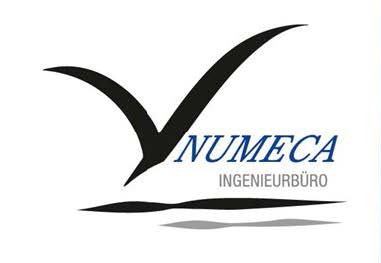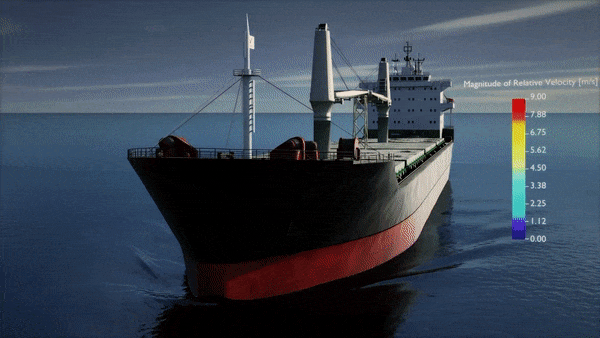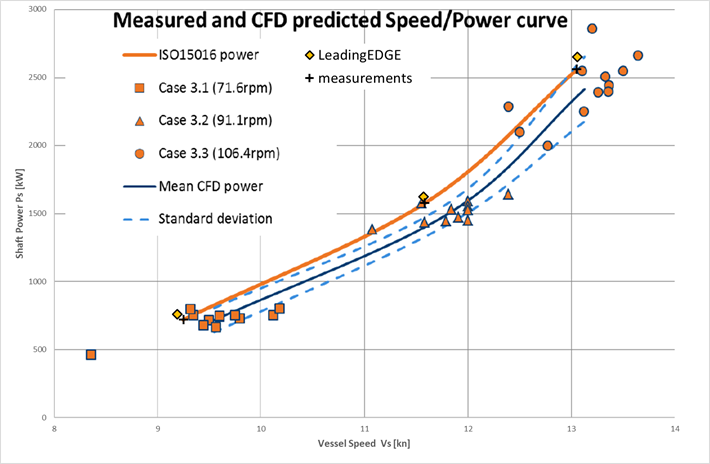LeadingEDGE Predicts Full-Scale Ship Performance of Lloyd’s Register Regal
Ship Performance | Marine | Naval Architecture | Design | Full-Scale | Open Water | Propeller | Self-propulsion
Maritime transport is the backbone of international trade and the global economy. According to the 2022 United Nations Conference on Trade and Development (UNCTAD), over 80% of the volume of international trade in goods is carried by sea, and the percentage is even higher for most developing countries.
With an overall fleet of such a considerable size, the environmental impact of those ships on sea and atmosphere is substantial. According to the International Maritime Organization (IMO), shipping makes up around 3% of global carbon dioxide (CO2) emissions today. With a rising world population and a subsequent rise in the need for supplies, we need to find solutions to make the shipping industry greener, as it is not likely to decline in size.
The newest IMO 2023 regulations aim to reduce present emission values by 40% by 2030 compared to 2008. Ship designers and builders can use the most cost-efficient solutions to comply with these regulations. From a technical perspective, this can be translated into the need for more efficient and accurate design methods to be able to predict expected ship performance early in the design phases. Accurate forecasts can avoid expensive retrofitting solutions afterward.
Computational Fluid Dynamics (CFD) software increasingly plays a significant role in predicting and optimising ship performance. Extensive international workshops aimed at the constant verification and validation of the data produced by CFD tools are regularly organized among research centers and universities that are deeply involved in further developing this numerical alternative to experimental model testing.
Lloyd’s Register Test Case
The Lloyd’s Register Workshop, organized by the Technical Investigation Department from Lloyd’s Register, was one of these workshops with worldwide participation. The scope of the workshop was to validate a numerical method to accurately predict full-scale ship performances, aiming at accelerating the design process of ships and providing time- and cost-efficient alternatives to model testing. Participants had to submit numerical results of predicted vessel speed, shaft torque, dynamic equilibrium, and propeller cavitation extension at given conditions. These results were then compared against onboard measurements and observations carried out on the cargo ship ‘REGAL’ during sea trials.
The ship under consideration was a 138m general cargo vessel built in 1994 in Poland, with a gross weight of 11,542 tons and equipped with one four-bladed, right-handed, fixed-pitch propeller.
LeadingEDGE Results
LeadingEDGE Marine Engineering participated in the workshop and used Fine™/Marine for their entire project. LeadingEDGE’s method was mainly built around an advanced Actuator Disk model implemented in Fine™/Marine, which reads the open-water performance of a real propeller. Being able to remove the actual propeller geometry from the numerical computations considerably simplifies the physics and speeds up the process. Only the bare hull resistance and the self-propulsion cases were needed to validate the method (cavitation and open-water propeller tests were out of the scope of this exercise).
Contrary to what is customary for hull resistance simulations, a full hull was simulated instead of a half one. This allowed for the correct inclusion of small asymmetries due to the vessel’s initial hydrostatic equilibrium and the 3D scanned geometry, as provided by the workshop organizer.
The process led to accurate results within a day, proving the method is viable for the commercial services currently offered by LeadingEDGE.
The measurements carried out by Lloyd’s Register on the 138m general cargo ‘Regal’ were used as a reference. Further analysis of the numerically predicted self-propulsion points showed excellent agreement with the measured vessel speeds (discrepancies lower than 1%). It also highlighted a slight overprediction of the shaft power values (up to 5.5%), which was expected due to the inherent simplifications in the numerical method presented here (Figure 1).



